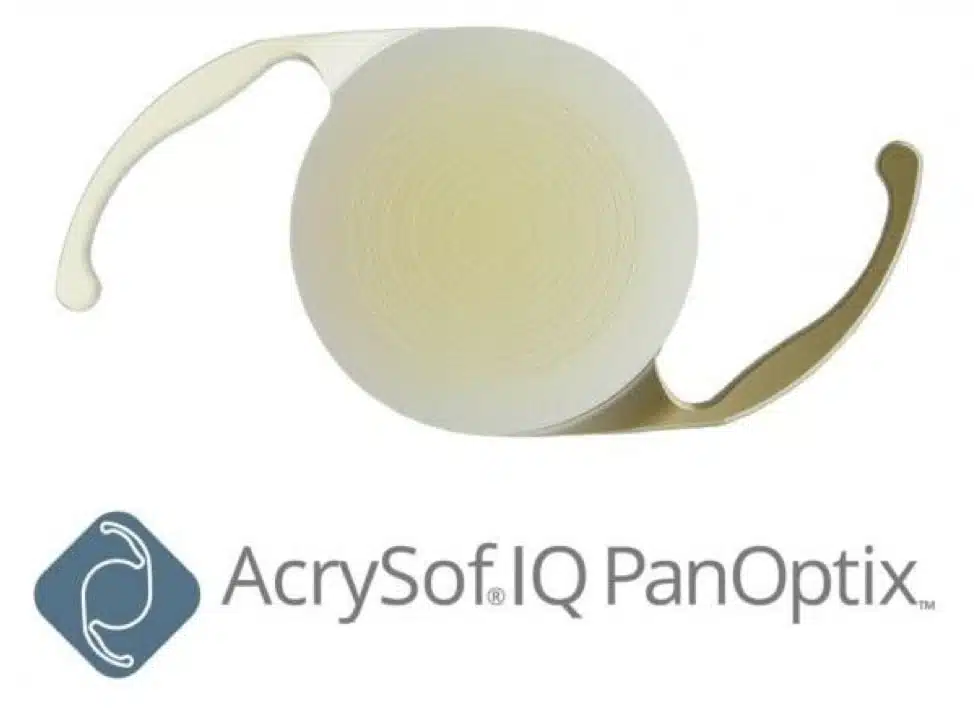
Understanding the Benefits of Premium Intraocular Lenses
Key Highlights
- Premium intraocular lenses (IOLs) are advanced artificial lenses. They give a wider range of vision than standard IOLs.
- Multifocal IOLs help you see clearly at different distances. They can reduce or even remove the need for glasses after cataract surgery.
- Extended depth-of-focus (EDOF) lenses improve intermediate and distance vision.
- Toric IOLs reduce higher levels of astigmatism that’s not correctable by laser.
- Premium IOLs aim to offer lasting, high-quality vision. This can improve your overall quality of life.
- Treatment of dry eye is important to obtain the best vision outcomes with all types of IOLs, but especially with premium intraocular lenses.
Introduction
Keeping your eyes healthy is very important for seeing well and feeling good overall. When cataracts make the lens of your eye cloudy and reduce your vision, intraocular lenses (IOLs) can help. Standard IOLs usually aim to focus your vision at just one distance. On the other hand, premium IOLs give you another option.
Exploring the Types of Premium Intraocular Lenses
Advancements in eye care have created many high-quality IOLs, each designed for different situations and vision needs. Choosing the right artificial lens depends on multiple variables, including your lifestyle, vision needs, and general eye health. Your eye doctor will do a complete exam and talk about your personal needs to find the best choice for you.
Let’s look at some popular types of premium intraocular lenses.

Multifocal Intraocular Lenses for Near, Intermediate, and Far Vision Correction
Multifocal Intraocular Lenses (MFIOLs) have several focal points. This helps you see both far away, intermediate, and up close, similar to progressive glasses. After surgery, these lenses can reduce the possibility that you’ll need reading glasses or bifocals. This could give you more freedom from using visual aids.
Multifocal IOLs work by splitting the light that comes in. They send different parts of the light to areas of the retina that help with close-up, middle, and faraway vision. Your brain adjusts to this method of seeing. It will switch smoothly between the different focal points without you having to do anything. This means you can have good vision at all distances.
With these lenses, you can do activities like reading, using digital devices, and driving without having to put on glasses.
Like all things in medicine, outcomes can vary for each individual. Some patients’ brains have a more difficult time adjusting to using this type of optical system. Improvements can continue to be seen for about 1 year after surgery.
The Most Commonly Used: Alcon ReStor (past) and Alcon PanOptix IOL (present)

Extended Depth-of-Focus Lenses for a Wider Range of Vision
Extended Depth of Focus (EDOF) lenses are made to help you see better at different distances. They extend the clear vision range. This means you can see clearly without needing glasses, especially when you are using a computer or enjoying your hobbies at far distances.
Similar to multifocal IOLs, EDOF lenses work by using a special lens design. They stretch the focal point of light that comes into your eye. This helps create a larger area where you have sharp. With EDOF lenses, it feels smoother to see things at different distances, especially for things at distance vision and intermediate vision. This improves how well you see overall.
EDOF lenses give a wider range of vision as compared to standard, monofocal IOLs. They can reduce some of the issues like glare and halos that can develop with multifocal lenses. This makes them a good option for those who use their vision a lot at night. After LASIK surgery, multifocal IOLs are usually contraindicated, but EDOF lenses can still be a great option for those wanting to minimize their dependence on glasses.
Most Commonly Used: J&J Symfony and Synergy and Alcon Vivity

Toric Lenses for Astigmatism Correction
Toric Intraocular Lenses are great for reducing astigmatism, a type of vision problem that makes everything look blurry at all distances. These special lenses correct astigmatism which leads to clearer vision.
Unlike regular spherical lenses, which have the same strength in every direction, toric lenses have different strengths in different parts. They work like toric contact lenses. This design helps to counterbalance the shape of the cornea, which is what causes astigmatism.
Toric IOLs are chosen with care and placed carefully in the eye. They are set up to match the specific level and angle of a person’s astigmatism. This gives clearer and sharper vision compared to standard IOLs.
Astigmatism can be reduced using the femtosecond laser during laser cataract surgery. However, there are limits to how much astigmatism can be corrected by laser cataract surgery and that is where toric IOLs become very useful.
Most Commonly Used: Alcon AcrySof Toric (monofocal toric), Alcon PanOptix (multifocal toric), and J&J Synergy Toric (EDOF toric)
Light-Adjustable Lenses (LALs)
Light-Adjustable Lenses (LALs) are a new choice for high-quality intraocular lenses. These lenses can be adjusted after surgery to meet each person’s needs. This way, they help improve visual acuity.
LALs change the lens power, after it’s been implanted, using light. This makes them more flexible than regular fixed lenses. Patients can adjust their vision over time. Keep in mind that they are functionally similar to monofocal IOLs, so each eye will have vision at one focal point.
The dominant eye can be focused at distance and the non-dominant eye can be adjusted to see things in the intermediate or near range. At this time, our office does not offer LALs. The high cost of these lenses make them less attractive for most patients.
Most Commonly Used: LAL by RxSight
Accommodating Lenses for Dynamic Focus Adjustment
Accommodating Intraocular Lenses are made to act like the eye’s natural way of focusing. Unlike regular intraocular lenses (IOLs), which have one fixed focal point, accommodating lenses can move back and forth a bit in the eye. This movement occurs when the ciliary muscles contract.
Even though the movement is small, it helps give better focus from near to far. This is similar to how a healthy natural lens works. The goal of accommodating lenses is to provide people with more natural vision, especially for things that are close up.
While they don’t fully match the flexibility of a young person’s original lens, accommodating IOLs may offer a wider range of clear vision. We do not currently offer accommodating IOLs at our office. They have been plagued by issues. When the arms of the lens heal in place, a process called fibrosis, the lens can become stuck in one position. This has been referred to as the z-syndrome.
Most Commonly Used: Bausch CrystaLens/Trulign

The Science Behind Premium Intraocular Lenses
All types of IOLs are carefully made with advanced materials and the latest technology. They are built to fit with the eye’s natural way of seeing, providing high-quality visual performance.
These premium IOLs are designed to work in different situations and meet specific vision needs. They offer stable performance over time, and aim to provide the best possible vision results.
How Premium Intraocular Lenses Enhance Vision Quality
The main benefit is that they reduce the need for glasses or contact lenses. Premium intraocular lenses, like multifocal lenses, provide a wide range of vision. This means less need for corrective eyewear, giving people more freedom and comfort.
Premium IOLs also help fix common vision problems. They can address issues, such as astigmatism and presbyopia. This leads to better clarity, sensitivity to contrast, and overall visual performance.
Again, the reality is that no lens is perfect and results can vary and be unpredictable at times. There are always a small percentage of patients that may still require glasses or contacts to obtain their best vision.
The Role of Advanced Materials in IOL Performance
The great performance of premium IOLs comes from using materials that are friendly to the body and give clear vision. These materials are carefully tested to make sure they are safe for the eye and keep their clear properties over time.
The materials for IOLs are selected for their ability to bend. This allows the lens to fold during insertion, which allow your surgeon to implant them through smaller cuts. This leads to faster healing.
The new materials used in premium IOLs play a big role in improving vision and maintaining ocular health over time.
Innovations in Lens Design for Optimal Vision Restoration
Innovations in lens design are always improving how we restore vision. Premium IOLs use the latest technologies to help with many eye conditions and patient needs. Most modern IOLs filter UV light.
One new idea is the aspheric IOL. These lenses are made to reduce spherical aberrations, which are common problems that can blur vision. They give clearer and sharper images, even in dim light.
As technology grows, premium IOL designs will likely become better. They will continue to offer customized solutions for tough cases. This gives hope to people who want to restore their vision after cataract surgery.
Comparing Premium IOLs with Standard Monofocal Lenses
Traditional Monofocal Lenses mainly correct vision for one distance. Many patient’s choose to correct their far vision as much as possible, but some who are naturally near-sighted sometimes choose to remain near-sighted. Monofocal IOLs work well after cataracts removal. However, many people still need glasses for all distances (progressives) or for near (reading glasses).
On the other hand, premium intraocular lenses offer more than just basic vision help. They provide clearer vision and a broader focus range. This can help people depend less on glasses and improve their overall life experience.
The American Academy of Ophthalmology has an excellent page that summarizes IOL options.
Benefits of Premium Intraocular Lenses Over Traditional Options
Premium lenses have many advantages over standard lenses (monofocal lenses). They are great for people who want better vision and a better quality of life. Premium IOLs, which go beyond just fixing cataracts, help to meet many different vision needs.
One big advantage is that they can help people stop wearing glasses or at least wear them much less. Premium IOLs, including multifocal lenses, provide a wide range of vision. This helps many people do their daily activities without needing glasses.
They also help fix common vision problems, such as astigmatism and presbyopia, making your vision feel younger. With premium IOLs, you can experience better clarity, greater contrast sensitivity, and improved night vision. These benefits can be lost when using standard monofocal lenses.
Situations Where Premium IOLs Offer the Greatest Advantage
Premium IOLs are very helpful for people who need to see well and want to avoid glasses. Those with active lives often notice a big improvement in their daily life with premium IOLs.
People who need to change focus often, like those who use computers or have hobbies that need both close and far vision, can really use the benefits of premium IOLs. These lenses cut down the need to change glasses all the time, making things easier and more comfortable.
Also, for those who already have astigmatism, choosing toric IOLs during cataract surgery can lead to clearer vision. This helps them not need glasses afterwards.

The Surgical Procedure for Premium IOL Implantation
The surgery to implant premium intraocular lenses is like regular cataract surgery. It is usually done without staying overnight and is performed with topical anesthesia. Special drops are used to numb the eye for patient comfort.
In this surgery, the cloudy lens is carefully taken out using modern methods. Then, the premium IOL is placed accurately in the eye. The whole process is fairly quick, usually taking under 30 minutes. But keep in mind that the entire process at the surgery center can take 2-3 hours from start to finish.
When using premium IOLs, laser cataract surgery is usually the preferred method to remove your cataract.
Preparing for Surgery: What Patients Need to Know
Before you have cataract surgery with a premium IOL, you need to have a complete eye exam. This helps your ophthalmologist determine if you are a good fit for the surgery and what your vision goals are. During the visit, the surgeon will check your eye health.
It’s important to share your medical history. This includes any past eye problems or current medications you take. This way, you will get care that is right for you and the best premium IOL for your needs.
Your surgeon will explain the lens replacement procedure clearly. He will also answer your questions and give you instructions for care before the surgery. This includes how to use eye drops and what activities to avoid.
The Implantation Process: A Step-by-Step Overview
The lens replacement and implantation process starts by using anesthetic and dilating eye drops. With your eye numb, your surgeon makes a small cut in the cornea, which is the clear front part of your eye. This small opening lets them get to the eye’s natural lens, which has turned cloudy.
Using modern surgical techniques, like phacoemulsification, your surgeon breaks the cataract into tiny pieces. He will then carefully remove these fragments from the eye. This step is important because it clears the space for the IOL.
After the cataract is taken out, the premium IOL that fits your visual needs and lifestyle is inserted through the same small cut. The IOL unfolds and is placed inside the capsular bag, where the eye’s natural lens was.
Post-Surgery Care for Enhanced Recovery
After your premium IOL surgery, the recovery nurse will review your care instructions with you. Following these instructions will help you heal well and obtain the sharpest focus.
Your eye doctor will give you antibiotic and anti-inflammatory eye drops. These help prevent infections and reduce swelling. It’s important to use these drops as directed by your doctor.
While you recover, avoid rubbing your eyes, swimming, or doing strenuous activities. Regular follow-up appointments are key to monitor your healing and answer any questions you might have.

Real-Life Outcomes with Premium Intraocular Lenses
Many people have positive experiences with premium IOLs. They often report feeling better in their daily lives. Patients like being able to do things they used to find challenging because of their poor vision.
Premium IOLs help with clear distance vision when driving and better near vision for reading or other hobbies. This can give you more independence and freedom. With improved vision, you can feel more confident in social situations and at work.
Patient Testimonials: Before and After Experience
Patient testimonials reveal how premium IOLs can change lives. Many people are unsure about having cataract surgery. For most, the results were better than they expected and greatly improved their vision and quality of life.
Before the surgery, patients often had blurry vision. They struggled to see in low light and always had to adjust their glasses. Cataracts made it hard to do simple things like reading, driving, and recognizing faces and distant objects.
After getting premium IOLs, most people feel very happy and relieved. They say they have clearer and sharper vision at all distances. They also enjoy not needing glasses all the time and feel more confident in their daily activities.

Clinical Studies: Efficacy and Satisfaction Rates
Clinical studies show that premium IOLs work very well and most, but not all, people are happy with them. These studies reveal that premium IOLs do better than standard monofocal lenses at reducing the rates that glasses are needed. They help people feel more satisfied overall.
The American Academy of Ophthalmology says that premium IOLs are safe and effective for those wanting a full range of vision after cataract surgery. Many studies say that patients choosing premium IOLs are much more likely to reach their vision goals than those who choose standard monofocal lenses.
Also, clinical evidence shows that most people tolerate premium IOLs well, with few complications. The long-term benefits highlight how valuable premium IOLs are as a tool for your surgeon.
Which Premium Intraocular Lens is Best for Me?
The best type of artificial intraocular lens (IOL) for each person can change based on their needs, lifestyle, and eye conditions. For example, if you have a high amount of astigmatism, a toric lens might be the best choice to correct your vision. If you want clear vision for reading, a multifocal lens could work well. Your eye surgeon can help you find the right IOL for your situation.
Monofocal lenses are great for those who want to correct their vision at just one distance and are fine using glasses or contacts for other tasks. Multifocal lenses are good for people who want to rely less on glasses or contact lenses, even if it means a little loss in contrast sensitivity.
Choosing the right intraocular lens is a personal decision. There is no right or wrong lens choice. What is best for you may not be the best for someone else. It’s essential to talk to your eye doctor about your options. This way, you can pick the lens that helps you reach your vision goals.
Finally, keep in mind that if you have pre-existing eye diseases like glaucoma, diabetic retinopathy, or macular degeneration, you will may not be a candidate for premium IOLs.
What are Possible Issues and Complications Related to IOL Implantation?
IOL implantation is usually safe and works well. Like any surgery, it does come with some risks and potential side effects. Luckily, most issues are rare and fixable.
Some possible problems are pain, inflammation, infection, bleeding, retinal detachment, IOL dislocation, and need for further surgery. Many of these risks are common for all eye surgeries. A few patients might notice vision issues like blurry vision, double vision, glare, halos around lights, or trouble seeing in low light.
Patients who have had any prior surgery on their eye, eye injury, or who have any eye disease are at higher risk of complications and of needing glasses or contacts to correct residual refractive error to obtain their best vision.
It is very important to pick a skilled eye surgeon for your procedure to minimize the risk of vision issues. You should also follow all the instructions before and after the surgery. With the right care, most people who get premium IOL implants see great improvements in their vision and quality of life.

Surgeon Opinions on Implants and Explants
Surgeons agree that premium IOL implants are safe and work well for carefully selected cataract patients. They often suggest these premium lenses to people who want to rely less on glasses and improve their vision. Before getting a new lens, it’s best to make sure that conditions like dry eye disease has been managed.
In the end, the choice of a specific premium IOL is different for each person. That decision takes into account the patient’s health, lifestyle, visual hopes, and budget. Surgeons stress the need for an open discussion about realistic expectations. This helps make sure that patients are happy with their chosen IOL option.
Schedule Premium IOL Cataract Surgery
If you are thinking about premium IOL cataract surgery, call Dr. Jones and Dr. Triana at the San Antonio Eye and Face Institute to set up a consultation. Either doctor can perform your consultation, but Dr. Jones performs all cataract surgeries at the Institute. Our dedicated team will do everything possible to help you achieve your best visual outcome. We use the latest technologies and create treatment plans that are individualized just for you.

Conclusion
Premium intraocular lenses (IOLs) are a great way to improve your vision. They offer more benefits than traditional lenses. Each type of IOL can help with different vision needs. They can help you see better and reduce your need for glasses or contacts.
Learning about the technology and surgery involved with premium intraocular lenses can help you make smart choices about your eye health. Many success stories and clinical studies show that these lenses do work well to improve patients’ vision and quality of life.
Take the first step towards clearer vision today. Contact us to schedule your premium IOL consultation.
Frequently Asked Questions
Why are premium intraocular lenses so expensive?
The cost of intraocular lenses can be relatively high due to several factors:
- Advanced Technology: IOLs are made using cutting-edge technology and materials to ensure optimal vision correction and durability.
- Precision Manufacturing: The manufacturing process for intraocular lenses requires high precision and quality control standards to meet the specific needs of each patient.
- Regulatory Requirements: Intraocular lenses must meet strict regulatory standards set by health authorities to ensure their safety and effectiveness, which can contribute to their overall cost.
- Surgeon Expertise: The expertise required to implant intraocular lenses adds to the overall cost of the procedure.
- Research and Development: Significant investments in research and development are made by manufacturers to improve the design and performance of intraocular lenses.
While the cost of premium intraocular lenses may seem high, they play a crucial role in restoring vision and improving quality of life for individuals undergoing cataract surgery. It’s important to discuss any questions about the cost of cataract surgery or premium IOLs with your healthcare providers, their billing staff, or your insurance company.
Are Premium IOLs Covered by Insurance in San Antonio, TX?
Coverage for premium intraocular lenses is NOT covered by Medicare or medical insurance plans in San Antonio. Medicare and other health insurance plans will pay for a standard monofocal lens used in cataract surgery. However, premium IOLs are seen as optional refractive surgery treatments and comes with extra costs that you need to pay out of your own pocket. This policy is uniform across the United States.
In a similar fashion, laser cataract surgery with astigmatism correction is categorized as a laser refractive surgery and not covered by Medicare or other insurance companies.
We do offer options to finance your laser cataract surgery and premium intraocular lenses through CareCredit. Click the link below to apply:
How Long Do Premium IOLs Last?
Premium intraocular lenses are made to be lasting lens implants. Unless something unexpected happens, the power of the premium IOL lens should stay stable. This offers clear vision for a long time and stops the need for extra cataract surgery.
Can Premium IOLs Be Replaced or Upgraded?
In some cases, you can replace or upgrade premium intraocular lenses. However, this is usually not as simple as the first surgery and comes with great risk to the eye. If you need to change or move the lens, advanced surgical techniques like refractive lens exchange could be an option. However, in most cases, attempting to remove or replace an intraocular lens is not typically advised. That’s why its so important to make a good decision the first time.
What is Refractive Lens Exchange?
Refractive Lens Exchange (RLE) is a surgical procedure designed to correct vision by replacing the eye’s natural clear lens with an artificial IOL. Similar to cataract surgery, RLE is primarily used for individuals who are not good candidates for laser vision correction like LASIK, particularly those with severe farsightedness, nearsightedness, or presbyopia.
The procedure helps reduce the need for glasses or contact lenses by providing clearer vision at multiple distances, however, depends on the type of IOL chosen. It is an excellent option for patients looking to address age-related vision changes and achieve long-term visual improvement.
Unfortunately, RLE is not covered by insurance. The American Academy of Ophthalmology has a webpage that discusses this controversial procedure.
|
Low Price Range |
Traditional Cataract Surgery with Monofocal IOL |
|
Middle Range |
Laser Cataract Surgery with Premium IOL |
|
High Range |
Refractive Lens Exchange with Premium IOL |


